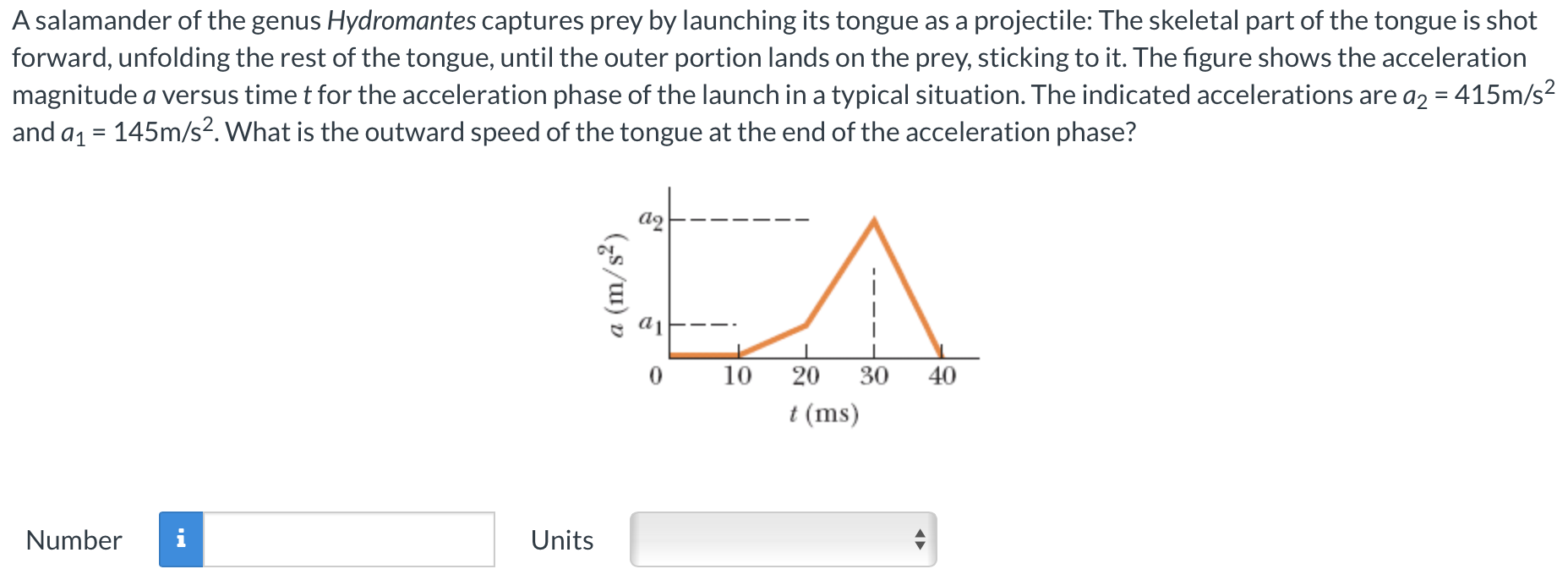A salamander of the genus Hydromantes captures prey by launching its tongue as a projectile: The skeletal part of the tongue is shot forward, unfolding the rest of the tongue, until the outer portion lands on the prey, sticking to it. The figure shows the acceleration magnitude a versus time t for the acceleration phase of the launch in a typical situation. The indicated accelerations are a2 = 415 m/s2 and a1 = 145 m/s2. What is the outward speed of the tongue at the end of the acceleration phase? Number Units



You'll get a detailed, step-by-step and expert verified solution.
 Work With Experts to Reach at Correct Answers
Work With Experts to Reach at Correct Answers